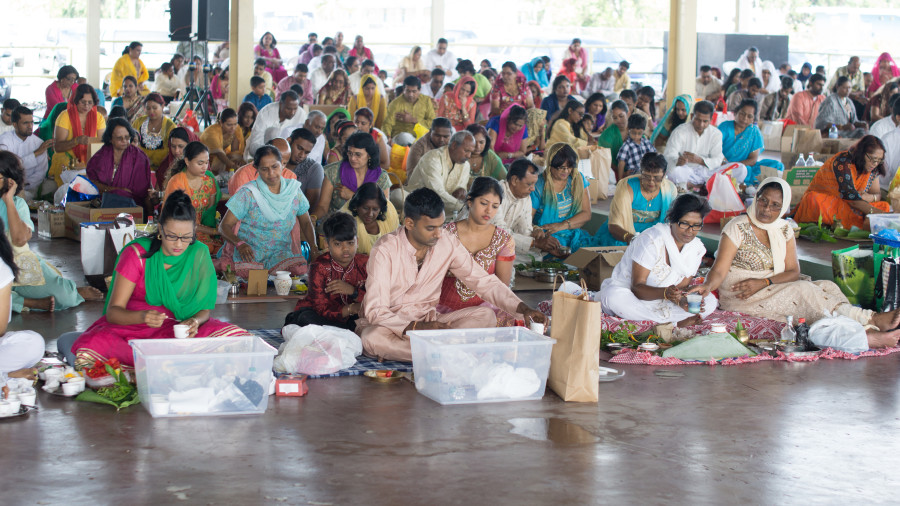For many Hindus, the term satsang refers to some special event where devotees assemble to join together in worship that involves bhajan, kirtan, mantra recitation and religious discourses. However, some of you would already know that satsang is much more than this. The word Satsang itself, is often translated as “truthful association”. Now, if we were to apply this literal translation as a definition, then, one may say that every single individual would have participated in satsang at some point in time in his life. But, what is the role of satsang in our own spiritual growth? Is it merely a medium for stimulating our spiritual receptivity for a fleeting moment of time, or can it be used as a powerful tool for spiritual developmental?
Satsang can provide devotees with an opportunity to ensure than they remain focused on their respective spiritual paths. In fact, efficiently conducted devotional satsangs can generate powerful, inspirational and sanctifying thought vibrations that help to uplift the intellects of the devotees as well as purifying the immediate environment within which they are held. Tulsidaasji mentions at the beginning of Raamaayan that satsang is the highest form of assembly. He even goes on to describe participation in satsang as taking a spiritual bath at Prayaag (the confluence of the Ganga, Yamuna and Saraswati rivers). Later in Raamaayan, Shree Raam states – “Pratham Bkakti Santan Kar Sangaa” (Satsang is the first form of devotion)! It thus enables individuals to actively participate in a most effective form of devotion since it incorporates a number of other well recognized forms of devotion.
When we consider the literal translation of satsang, we will realize that it involves remaining in close association with those that are truthful and devoted to God. In other words, it refers to keeping the company of the holy ones like our Gurus and Pandits. Remaining close to individuals who will be able to guide one in the right direction and help to remove the doubts and negativities that may exist in the mind of the aspiring devotee. Those who are fortunate enough to be in frequent contact with such holy individuals have a wonderful opportunity to exploit this potential for spiritual growth that satsang provides.
At the higher level, satsang involves the cultivation of the inner quality of Sattva (truth or purity). This is one of the three modes of Prakriti (nature) – Sattva, Rajas and Tamas. While the latter, Rajas and Tamas refer to individuals who predominantly exist in the modes of passion, lust and ignorance – sattva is manifested as knowledge, truth and peacefulness. Devotees that engage in satsang will slowly develop this sattvic side of their beings; and in this way, will gradually begin to transcend the bonds of ignorance that prevent them from moving towards the divine.
Satsang is therefore, an effective means of communicating with the Lord and building spirituality. It can be practiced even when one is alone by remaining focused on thoughts of the Lord and the path towards God-realization. And, while there are numerous challenges along this path, one can overcome all of them by strengthening this characteristic of sattva. Through the medium of satsang, the individual self can be united with the Highest Self – the true objective of satsang.



